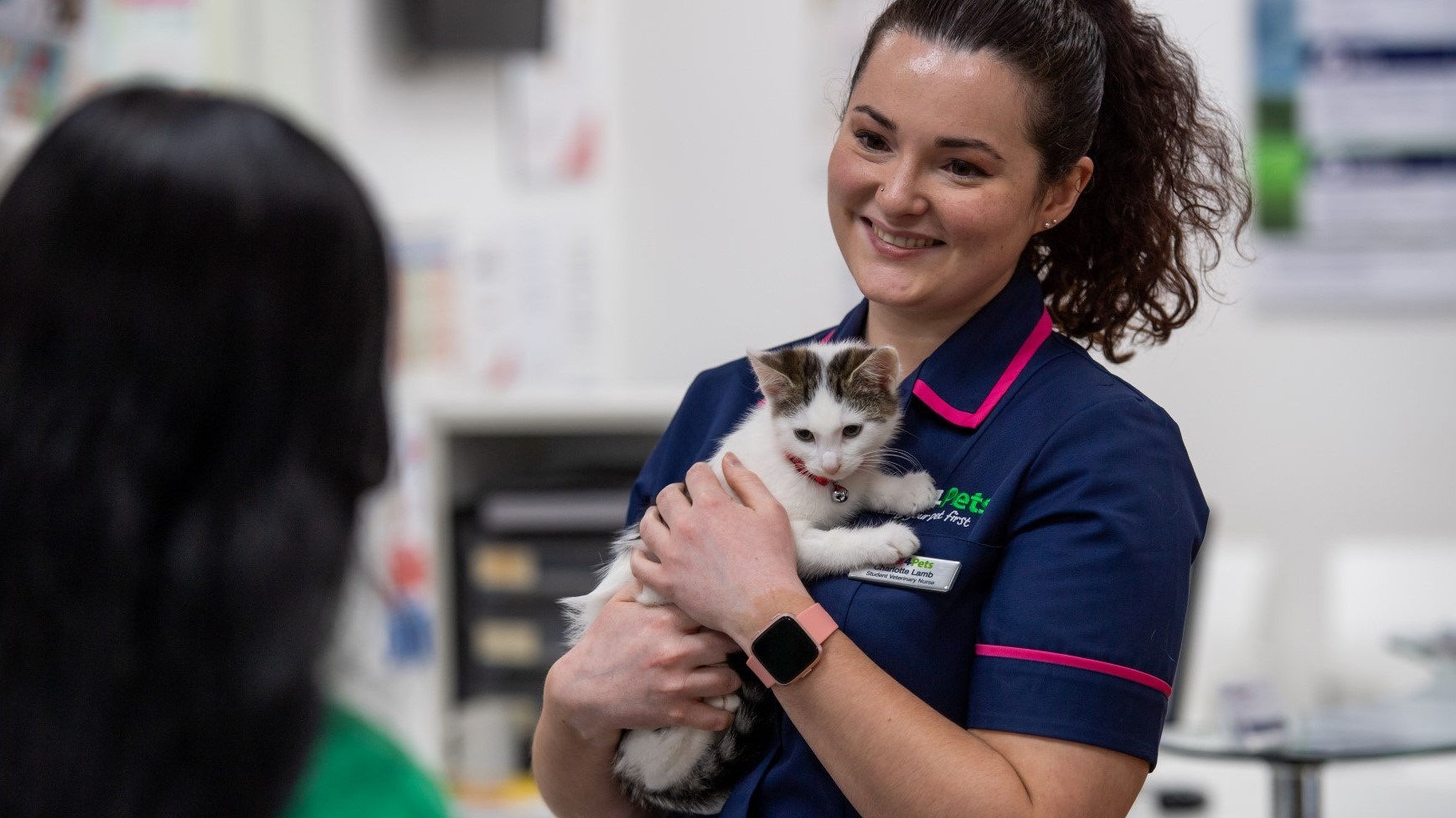
Cat Ticks Advice & Care
How to protect your cat from ticks.
Cats are fastidious creatures, and regularly clean their coats, but they can still pick up ticks. They can cause local irritation and even transmit diseases to your cat. It can be quite simple to find the ticks by regularly running your fingers through your cat's coat feeling for any small bumps. The most common areas for ticks to attach to a cat is around the head, neck and feet. The best treatment is prevention.
More about ticks and your cat
Ticks are small biting insects with powerful jaws and a big round body compared to their head. This specialised parasite latches on to pets (and humans!) and bites through the skin, feeding on blood. Ticks live on grass and other plants and latch onto a host when they pass. When they attach they are generally very small, but they grow rapidly when they latch on and start feeding. They may also change colour when feeding too, often going from brown to a pearly grey. We’re seeing many more ticks than before, possibly due to the warm, wet winters now common in the UK. Some cats do seem more prone to picking them up, especially if they love being outdoors and their territory includes areas which are favourable tick habitats.
Ticks can be found anywhere, but are typically located in long grass, rough upland and woodland areas – especially those which are damp and have high humidity. However, the spread of ticks means that they are now seen in urban areas, coastal environments and in most areas of the UK. The south of England, being warmer, has a higher tick population than the cooler north, but the long grasses and increasing average temperature of places like the Lake District and Scotland mean that tick populations are also growing there too. Sadly, there is no ‘safe’ area from ticks in the UK.
Although rare, other pets (usually dogs) may also bring ticks into the house, which can drop off and then bite your cat.
To see which other of our household pets can pick up ticks, take a look at our dedicated pet parasite page here.
The ticks themselves can cause allergic reactions, or can cause infections at the site of the bite if they are removed improperly. Lots of ticks can also lead to anaemia, and some ticks can also transmit nasty diseases. These diseases include: Lyme disease (Borrliosis) - Lyme disease in cats in the UK is extremely uncommon, however it has been recorded.
Signs of an infection in your cat include tiredness, lameness and going off their food. Rapid removal of attached ticks will help limit the chance of your cat contracting Lyme disease – the best way to ensure your cat is safe, however, is to use routine tick bite protection which can be provided by your vet.
Ehrlichiosis
Also very rare in cats, ehrlichiosis is a bacterial infection that affects the white blood cells. Affected cats have quite non-specific signs, such as depression, lethargy, a high fever and nasal discharge. Left untreated, ehrlichiosis can progress to chronic disease.
Anaplasma (Anaplasmosis)
Anaplasmosis is caused by a bacterium called Anaplasma phagocyophilum, and can affect a range of species. In cats, the signs of anaplasmosis include fever, anorexia, joint pain and swelling.
The best way to check for ticks on your cat is to give them a close examination, looking and feeling for any unusual lumps and bumps. Around the head, neck and ears are common ‘hot spots’ for ticks, so here is a good place to start, but as ticks can attach anywhere on the body a full search is important. Any lumps should be thoroughly inspected – ticks can be identified by the small legs at the level of the skin.
If you aren’t sure, your vet can help you – any new lumps should always be checked by a vet anyway, so don’t be shy asking for advice if you need it. You may see swelling around the tick, but often the skin around looks normal. If you do find a tick, don’t be tempted to just pull it off. Tick mouthpieces are buried in the skin, and pulling off a tick can leave these parts within the skin surface, leading to infections.
If you do find an attached tick, don’t be tempted to just pull or brush it off. Tick mouthpieces are buried in the skin, and incorrectly removing a tick can leave these parts within the skin surface, leading to infections. It is also important not to squash the body of the tick while it is still attached – this can push blood back into your cat, and may further increase the chance of an infection developing. If you wonder how to get rid of ticks on cats, the best way to remove a tick is with a special tool called a tick hook – these are very inexpensive and can be an invaluable piece of kit. These have a hook or scoop with a narrow slot which traps the tick’s mouthpiece.
- Slide the tool between the body of the tick and your cat’s skin, making sure all fur is out of the way. This will trap the tick.
- Gently rotate the tool, until the tick comes loose.
- Removed ticks should be disposed of safely and it is advised to handle them with gloves.
As usual prevention is better than cure and your vet can help you plan the best tick protection – this might be in the form of a collar, spot-ons or tablets. Depending on where you live and your cat’s habits, tick protection might be not recommended, or recommended to be seasonal (tick season runs from spring to autumn) or all year round.
It is really important to note that some tick prevention for dogs contains permethrin, which is very toxic to cats and should never be used on them. Always use a cat safe product – the best way to do this is to get the recommended tick prevention from your local Vets4Pets.
Seasonal tick protection, if required, comes as standard as part of our Complete Care health plan.
Health Plans to keep your cat healthy
At Vets4Pets we offer a range of Health Plans that make essential routine treatments more affordable. You'll save money on things like annual vaccinations, flea and worm treatment and routine health check-ups.

Cat Advice
Read more of our expert cat advice to keep your cat happy and healthy.

